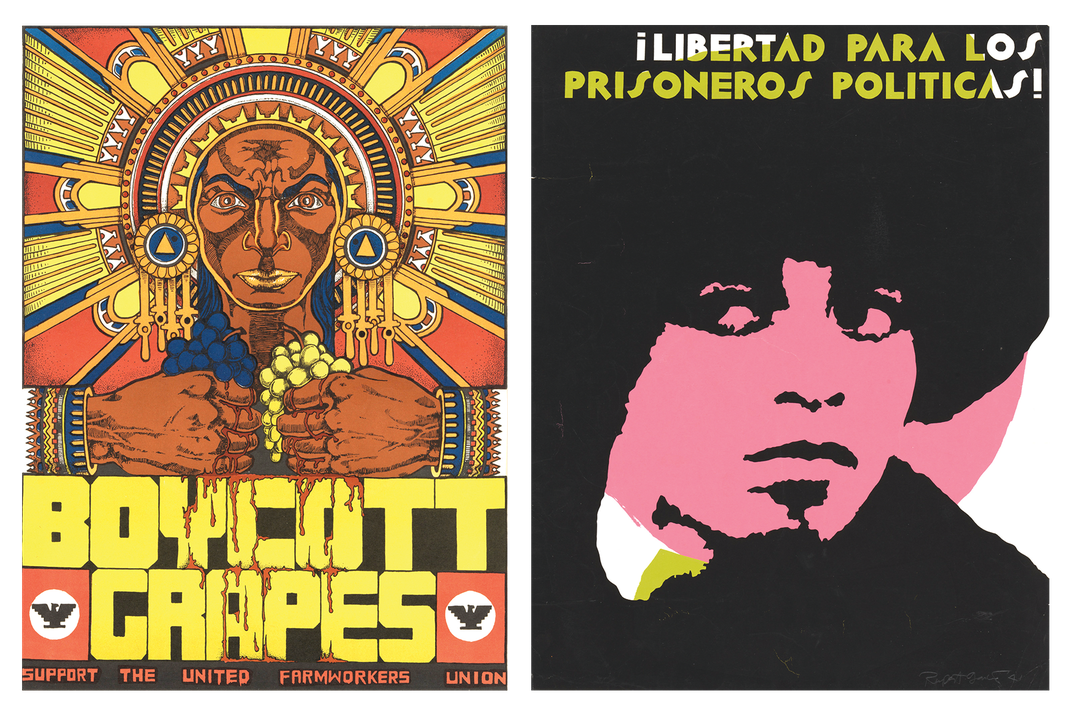YOUR IMPACT | YOUR SMITHSONIAN
Change Makers
The power, lasting impact of activist Chicano artists
/https://tf-cmsv2-smithsonianmag-media.s3.amazonaws.com/blogging/featured/Chicano_art_1.png)
Many of the Chicano graphic artists featured in ¡Printing the Revolution! The Rise and Impact of Chicano Graphics, 1965 to Now, a new exhibition at the Smithsonian American Art Museum, honed their craft during potent moments of social change in America. Starting in the 1960s, Chicano artists produced prints fueled by movements for civil rights, feminism, LGBTQ+ rights and more. Their work combines the personal and political—melding complex explorations of identity with political activism.
The exhibition places prints made during the civil rights movement alongside contemporary works by Chicano artists, and explores a legacy of activism and innovation. For decades, Chicano artists reinvented and improvised upon the form, integrating portraiture, satire and pop art techniques in their prints. Their work then and now has reshaped the legacy of printmaking in the United States—and gives a human face to issues such as workers’ rights, immigration and criminal justice.
Although the museum is closed temporarily due to the pandemic, you can explore many of the 119 prints, including portraits of iconic figures such as artist José Guadalupe Posada and activist Dolores Huerta, online. In addition, stories, videos and digital programs—including a five-part conversation with Latinx artists, scholars and activists—illuminate key themes, including cross-generational mentorship and broadening understanding of the history of, and key contributors, to the graphic arts.
“For Chicanos in the 1960s and 1970s, printmaking was an affordable, culturally resonant and generative vehicle that allowed artists to address a public, especially a Chicano public, that was coming into awareness of itself.”
—E. CARMEN RAMOS, EXHIBITION CURATOR

At the Smithsonian American Art Museum, curator E. Carmen Ramos has built a robust collection of work by Latinx artists and mounted exhibitions that highlight Latinx contributions to American art across generations and mediums. Drawn entirely from the museum’s permanent collection, the show includes work collected by Tomás Ybarra-Frausto, Gilberto Cárdenas and Dolores García, Ricardo and Harriett Romo, and the estate of Margaret Terrazas Santos, all of whom began collecting after participating in the civil rights movement.
This is the first major exhibition dedicated to Chicano printmaking and its influence on American art.

¡Printing the Revolution! The Rise and Impact of Chicano Graphics, 1965 to Now, is made possible with the generous support of Michael Abrams and Sandra Stewart, the Honorable Aida Alvarez, Joanne and Richard Brodie Exhibitions Endowment, James F. Dicke Family Endowment, Sheila Duignan and Mike Wilkins, Ford Foundation, Dorothy Tapper Goldman, HP, William R. Kenan Jr. Endowment Fund, Robert and Arlene Kogod Family Foundation, Lannan Foundation, and Henry R. Muñoz, III and Kyle Ferari-Muñoz. Additional significant support was provided by the Latino Initiatives Pool, administered by the Smithsonian Latino Center.
americanart.si.edu | Runs through Aug. 8, 2021
Published April 2021 in IMPACT Vol. 7 No. 2
Everything you read about in IMPACT is made possible in part thanks to support from lifelong learners like you. Donate today and power Smithsonian's mission to create and share knowledge with everyone, everywhere.
Want more stories about how the Smithsonian impacts your world? Join our community of curious, passionate knowledge-seekers from across the globe.


